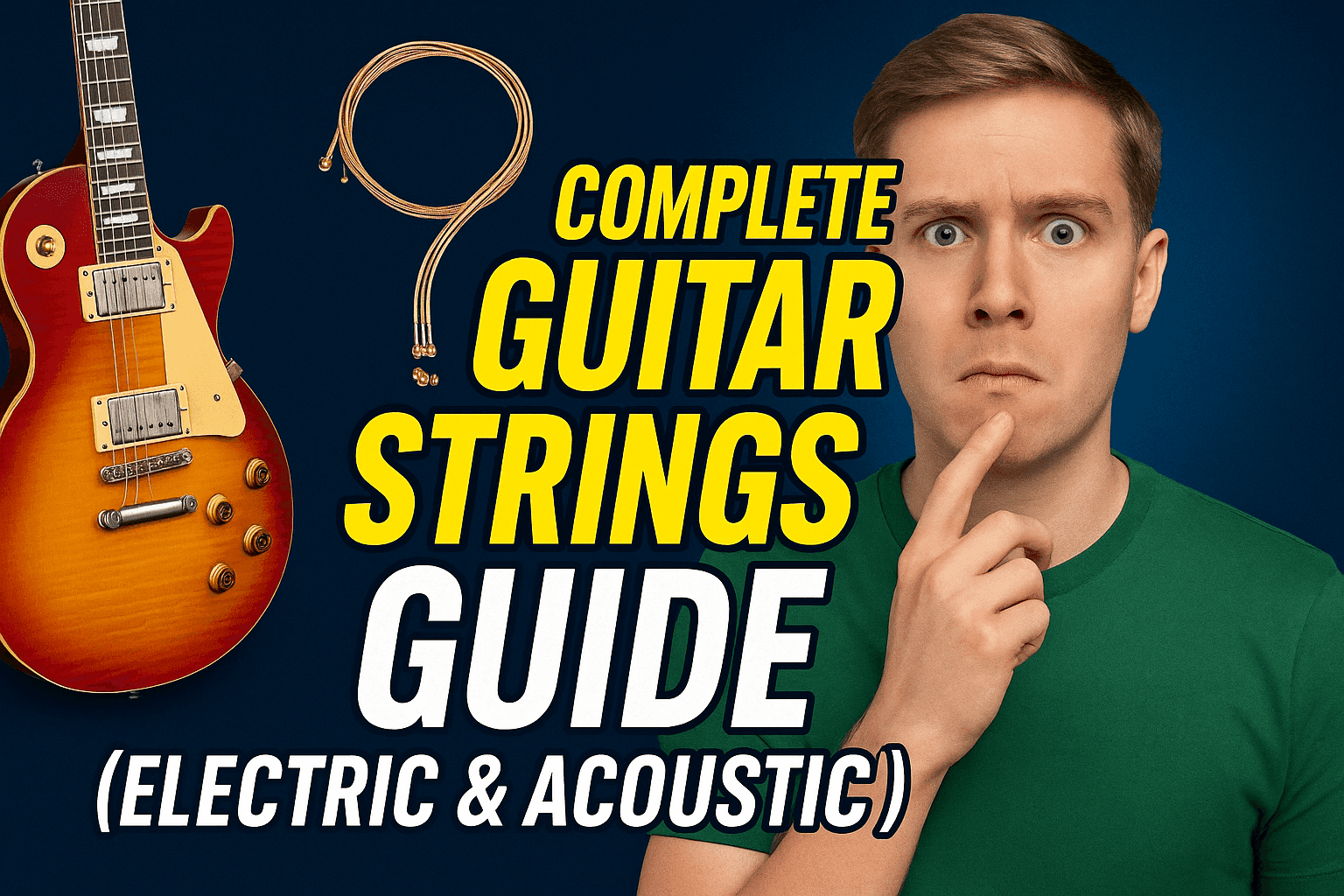
Art Gharana — 12 Mins read
Complete Guitar Strings Guide (Electric & Acoustic)
Musical Instruments

Choosing the right instrument can feel like a maze, especially when you are just starting your musical journey. This piano keyboard buying guide will help you understand everything about choosing, buying, and using a keyboard — whether you are a beginner, student, or professional musician. The right keyboard not only enhances your musical education but also makes learning piano easier and more enjoyable.
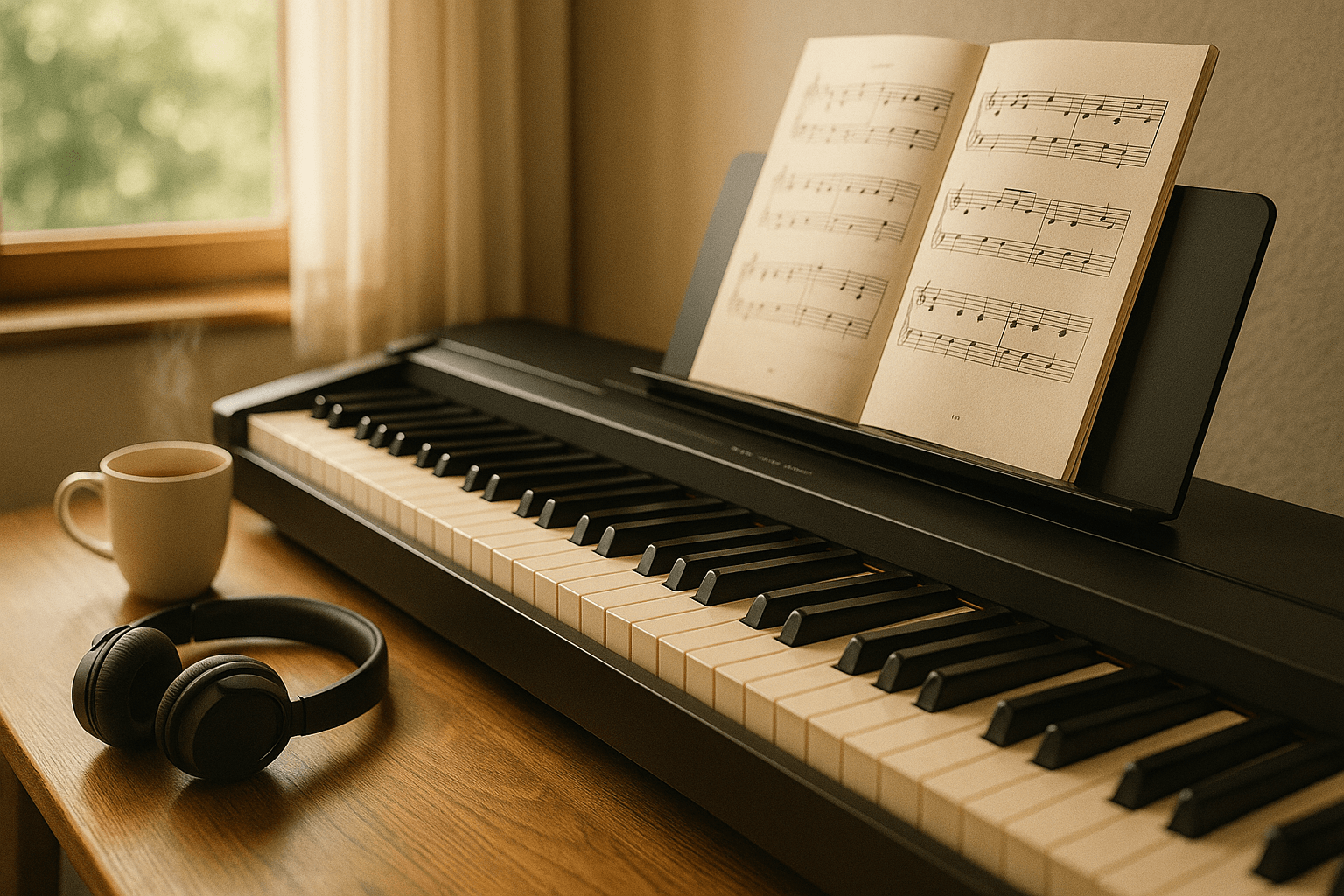 A piano keyboard is more than just a digital instrument. It is the bridge between creativity and sound, offering a vast range of tones and rhythms. Unlike traditional pianos, modern keyboards come in various forms, from digital pianos and synthesizer keyboards to workstation keyboards and arranger keyboards.
A piano keyboard is more than just a digital instrument. It is the bridge between creativity and sound, offering a vast range of tones and rhythms. Unlike traditional pianos, modern keyboards come in various forms, from digital pianos and synthesizer keyboards to workstation keyboards and arranger keyboards.
Choosing the right keyboard matters because it directly impacts how quickly you learn to play keyboard and how naturally your fingers adapt to key action and response. A high-quality beginner keyboard with weighted keys and realistic sound can make practice sessions more effective.
Here is a quick breakdown of major keyboard types:


Before you buy a keyboard for beginners, think about what you want to achieve. Are you learning piano as a hobby, or planning to perform professionally? Understanding your keyboard learning goals helps you pick between a simple beginner keyboard or a workstation keyboard for music composition.
Age plays a huge role. A keyboard for kids should be light and portable with unweighted keys for easier play. Teen or adult beginners, however, benefit from touch sensitivity and full-size keys for better finger training and expression.
While it is tempting to grab the cheapest model, it is smarter to think long-term. Investing in a beginner piano keyboard with better key action and sound functions means you will not outgrow it too soon.
If you have limited space, go for a 61-key keyboard instead of a full 88-key keyboard. However, remember that keyboard size affects the range of music you can play, especially when learning classical pieces.
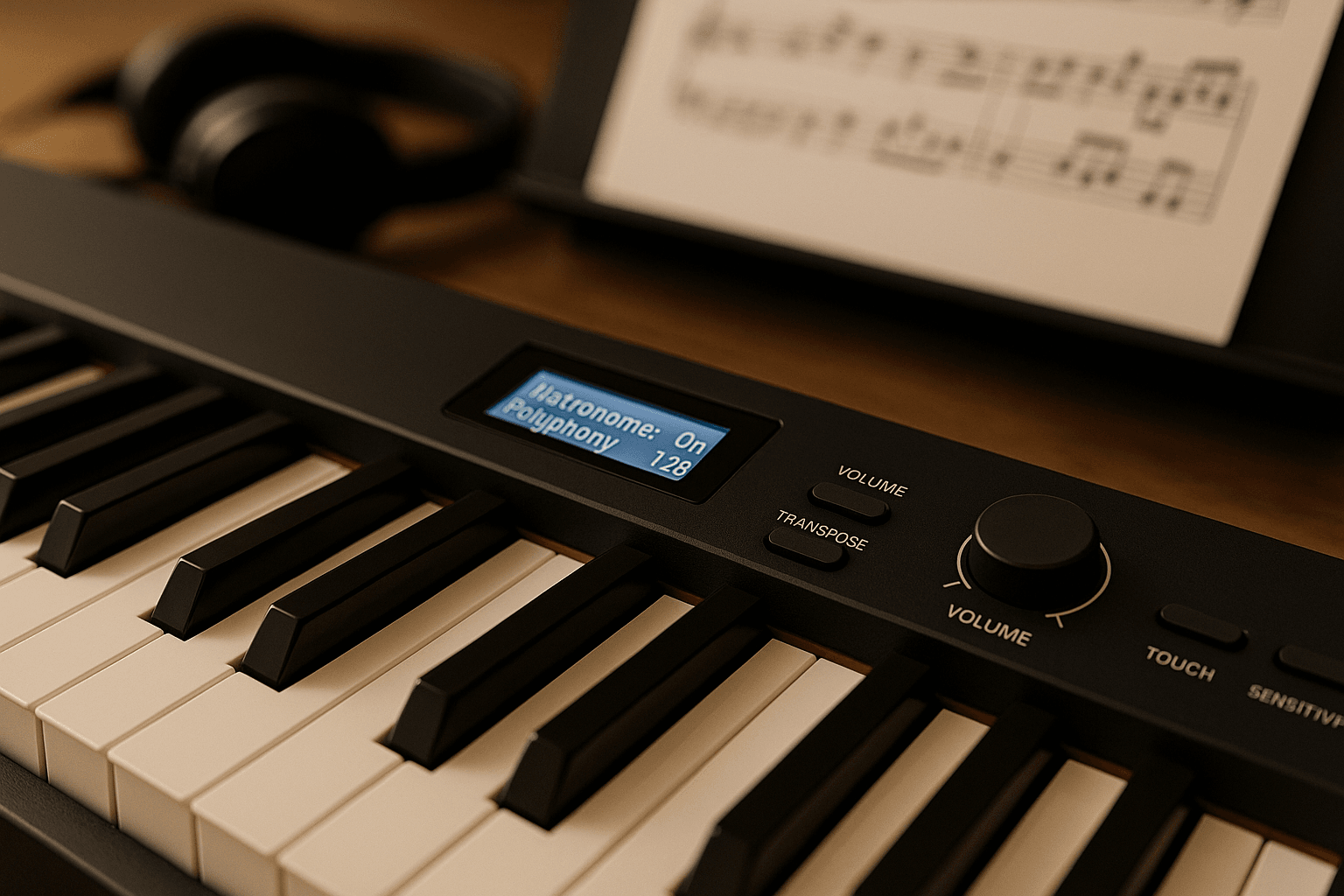
A full 88-key keyboard mimics an acoustic piano, ideal for advanced learners. Beginners might start with 61 keys — enough to play most songs while saving space and money.
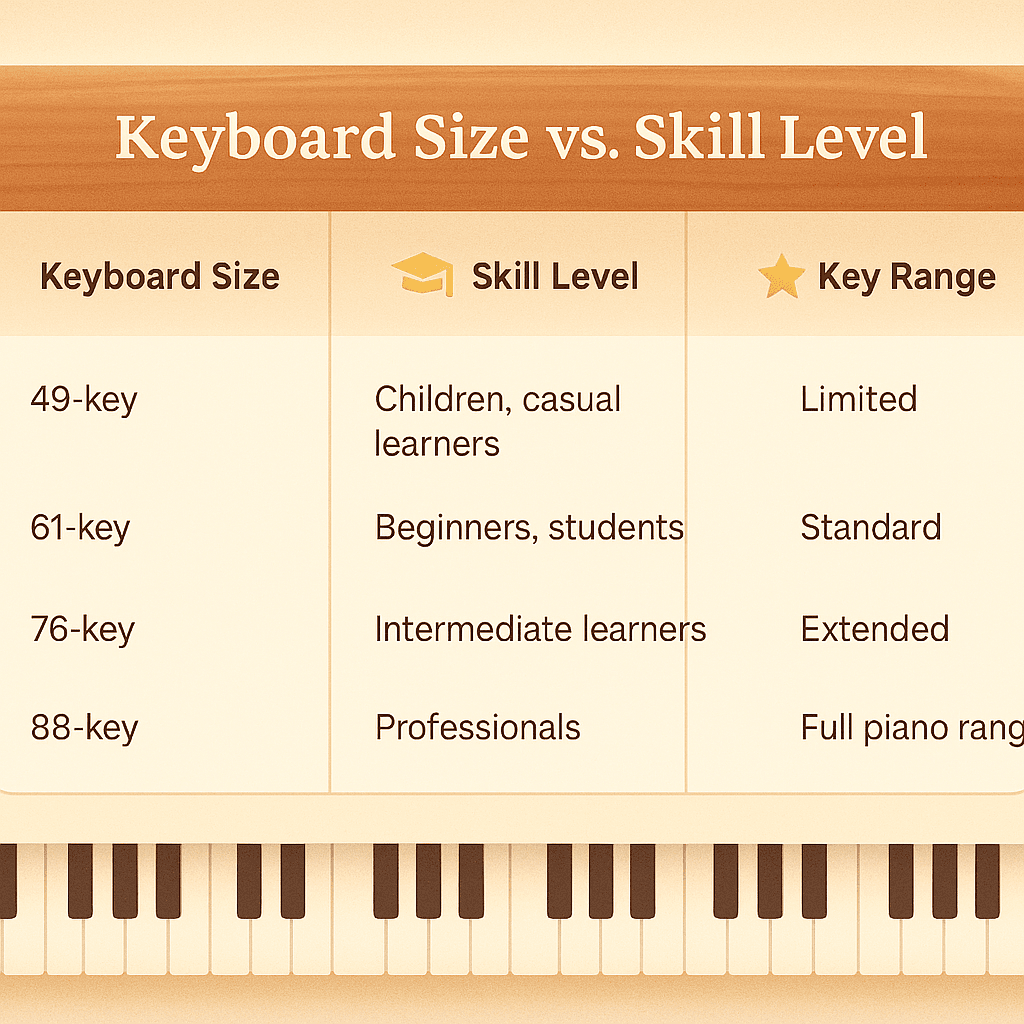
Keyboard action defines how keys respond when pressed. Weighted keys give a realistic piano feel, while unweighted keys are lighter and suitable for kids. Look for adjustable touch sensitivity that adapts to your playing style.
High keyboard sound quality separates good keyboards from great ones. Models with 64 or more polyphony allow complex music layering without note dropouts. Professional models even include multitimbrality, meaning multiple instrument sounds play together seamlessly.
Many modern student keyboards come with built-in metronomes, guided lessons, and accompaniment styles. These features help beginner keyboard lessons feel interactive and enjoyable.
A MIDI keyboard controller can connect to your computer for composing or recording. USB and Bluetooth features allow you to take online keyboard lessons or connect headphones for quiet practice.
Durability matters. A solid Yamaha keyboard, Casio keyboard, or Roland keyboard is known for lasting years with consistent key resistance and reliable components.
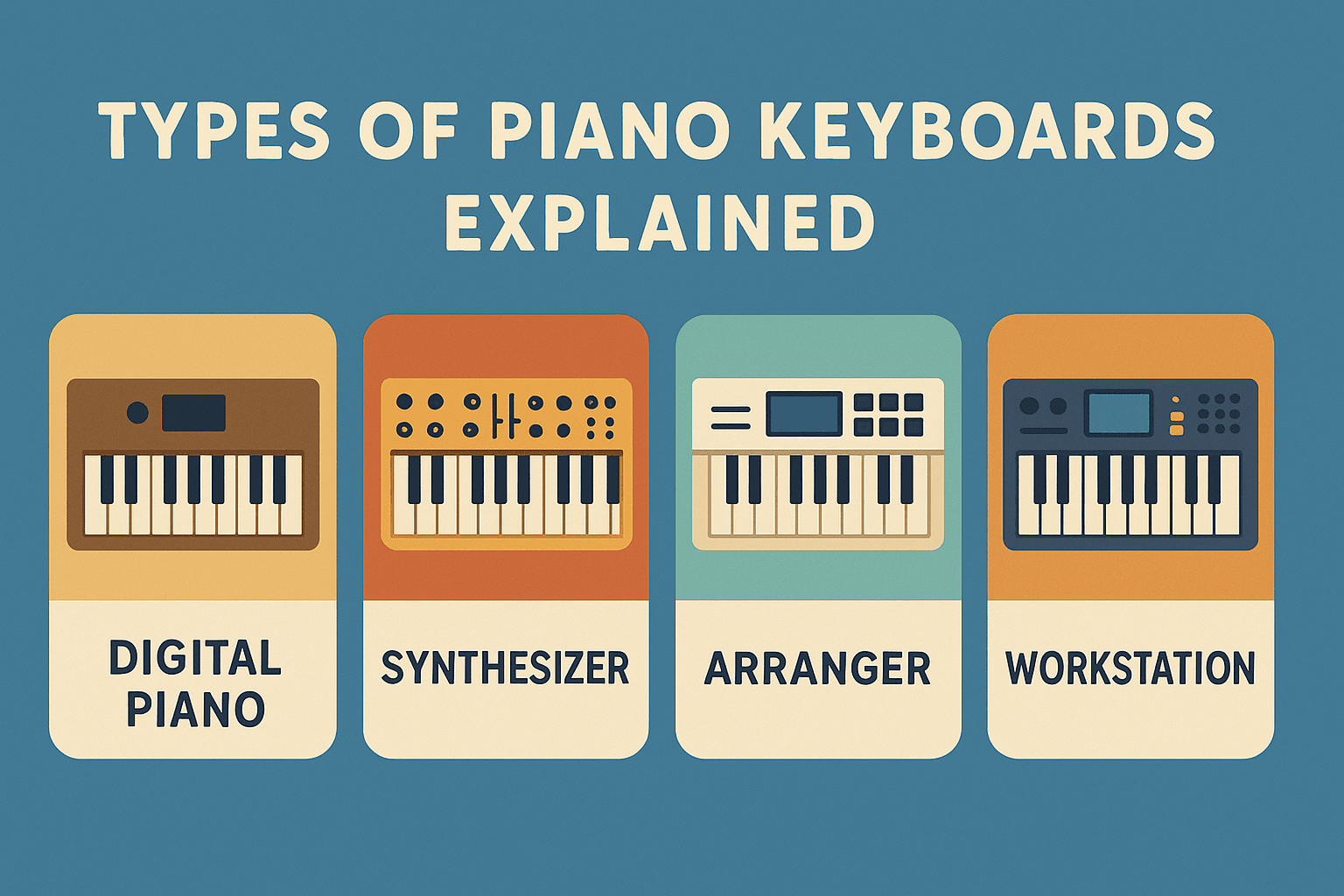 Understanding the main keyboard types helps you buy wisely and avoid confusion.
Understanding the main keyboard types helps you buy wisely and avoid confusion.
A digital piano mimics the tone and feel of an acoustic piano. It is perfect for those who want a traditional sound without heavy maintenance.
Advantages: Realistic sound, weighted keys, built-in speakers. Disadvantages: Less portable, higher price range.
A synthesizer keyboard allows you to shape and create sounds for modern music and recording.
Advantages: Thousands of sound patches, editing control, ideal for music composition for beginners.
Disadvantages: Steeper learning curve, requires external speakers.
An arranger keyboard helps performers compose with automatic backing rhythms.
Advantages: Easy music creation, live performance features. Disadvantages: May have limited piano feel and touch sensitivity.
A workstation keyboard is a full studio in one device — ideal for professionals.
Advantages: Built-in sequencer, mixing tools, multiple tracks. Disadvantages: Expensive and complex for beginners.
A controller keyboard does not create sound itself but controls software instruments.
Advantages: Affordable, ideal for digital music production. Disadvantages: Needs a computer or DAW to function.
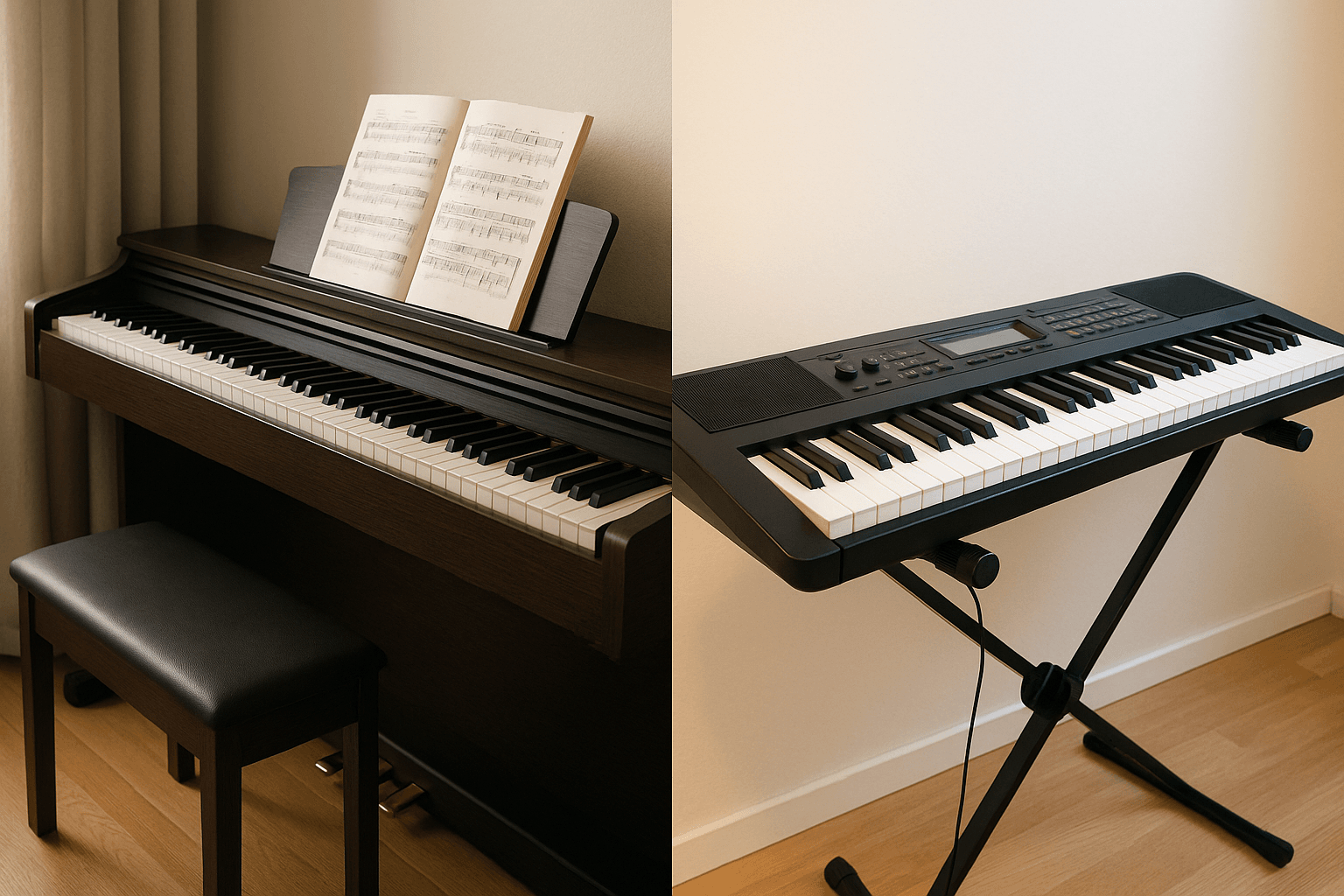 Though they look similar, they serve different needs. A digital piano focuses on realism and weighted keys, while a keyboard emphasizes portability and versatility.
Though they look similar, they serve different needs. A digital piano focuses on realism and weighted keys, while a keyboard emphasizes portability and versatility.
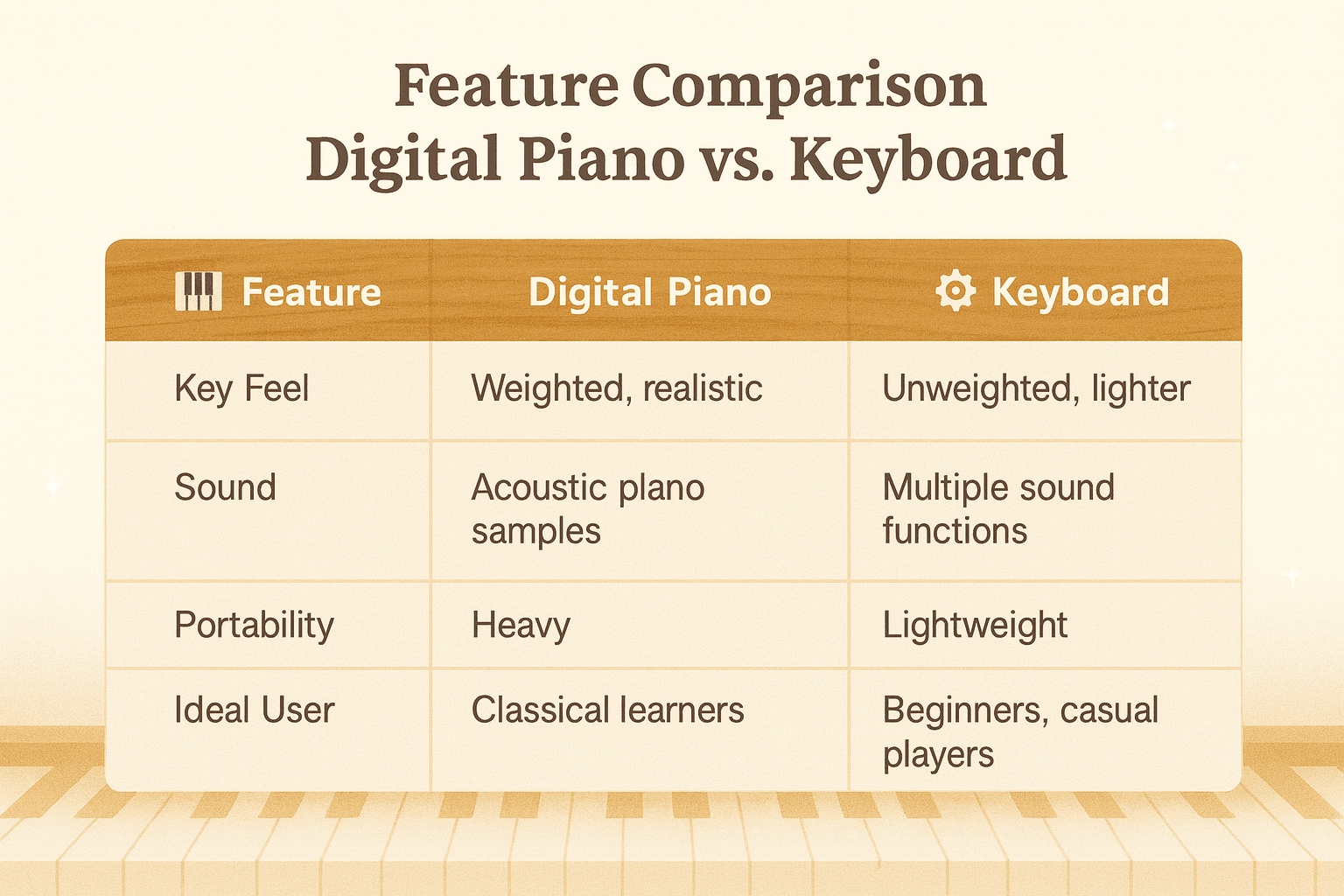
For beginners, a keyboard for students is easier to handle and more affordable. Professionals or serious learners may prefer the digital piano for a more authentic experience.
 A good setup enhances comfort and learning efficiency.
A good setup enhances comfort and learning efficiency.
Keeps your instrument stable and at proper height during keyboard practice tips sessions.
An adjustable bench promotes correct posture and prevents fatigue during long practice hours.
Adds expressive depth to your piano sound, similar to an acoustic piano.
A must-have for those living in shared spaces. Headphones for quiet practice let you focus without disturbing others.
A sturdy music stand keeps sheet music visible, while covers protect from dust.
An amplifier boosts sound for performances but is optional for home use. Some keyboard bundles include small amps suitable for beginners.

A new beginner keyboard kit guarantees reliability and modern features. You get full warranty support and fresh built-in speakers with consistent sound options.
Advantages: New tech, warranty, long life. Disadvantages: Higher cost upfront.
Used keyboards can be budget-friendly, but they may have worn keys or weaker sound quality.
Advantages: Cheaper, great for short-term learning. Disadvantages: Possible repairs, outdated software.
Each brand offers unique features.
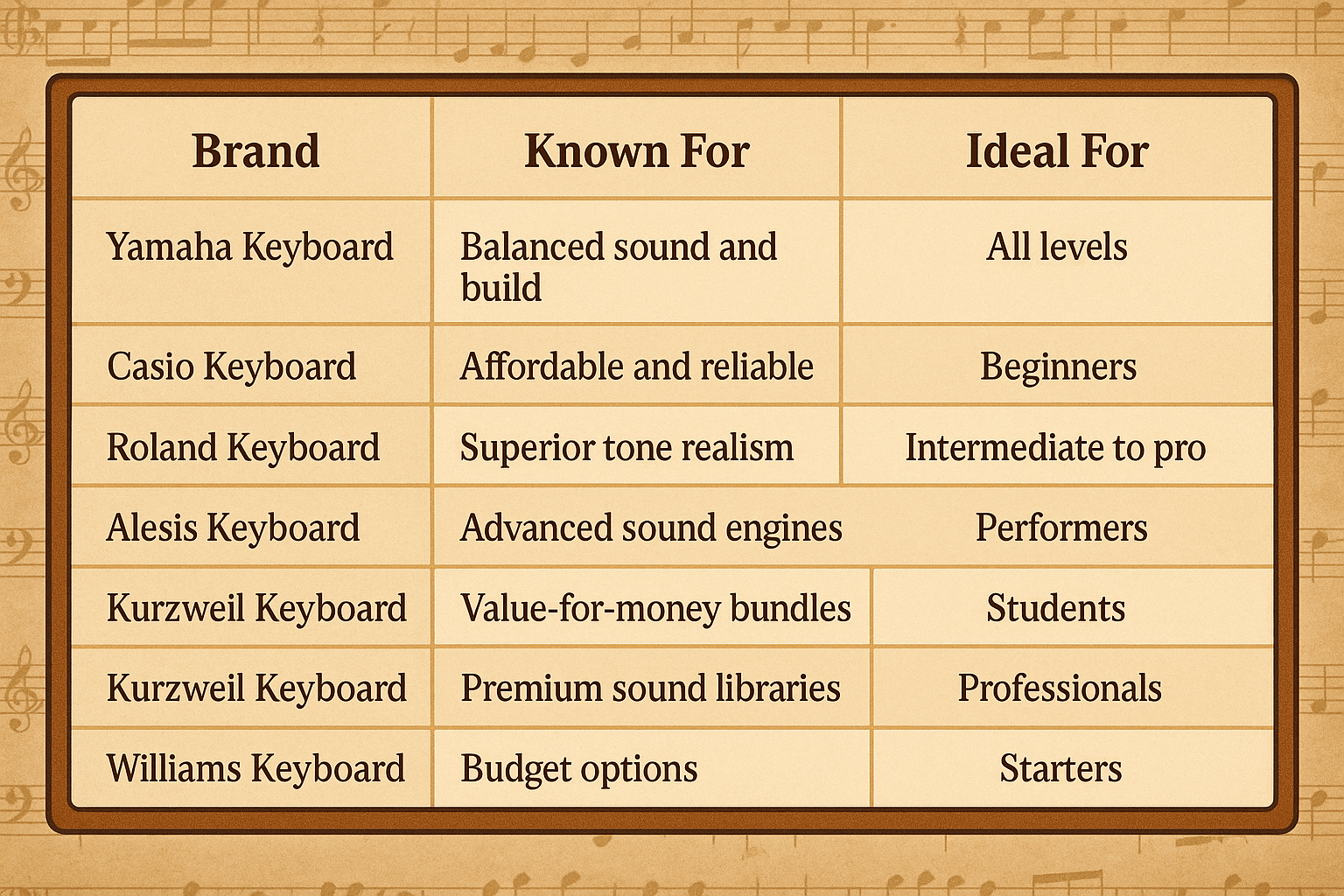
These best keyboard brands for beginners combine value, durability, and performance, ensuring smooth progress in musical education.
Many new players overlook key action and polyphony, leading to poor technique and limited sound range. Always test responsiveness before purchase.
Fancy displays or hundreds of tones will not make you play better. Focus instead on touch sensitivity, key resistance, and realistic piano sound.
A smaller 66-key keyboard may feel cramped over time, while a full-size 88-key keyboard offers room to grow.
Always check for USB, MIDI, or Bluetooth options. Future upgrades like connecting to recording equipment depend on it.
Train your fingers by playing soft and loud notes. It develops control and expressive playing.
Guided lessons and apps can make learning efficient and enjoyable, helping students track progress and practice consistently.
Dust can affect key action and response. Wipe keys weekly and cover your keyboard when not in use.
A Yamaha or Casio keyboard with weighted keys and touch sensitivity works best.
Yes, a 61-key beginner keyboard is sufficient for most songs and lessons.
Roland, Korg, and Kurzweil keyboards deliver superior tone and performance.
####What is the difference between a mechanical keyboard and a musical keyboard? A mechanical keyboard is for computers, while a musical keyboard produces piano sound and tones.
The Alesis keyboard offers great value, with reliable sound and learning features.
Choosing the right piano keyboard is like choosing a travel companion — it shapes your musical journey. Think about your keyboard learning goals, test the key action, and ensure the sound quality feels inspiring. Whether you choose a digital piano, synthesizer keyboard, or workstation keyboard, the best one is the one that motivates you to play every day. Start today, explore sound, and let music guide your path.